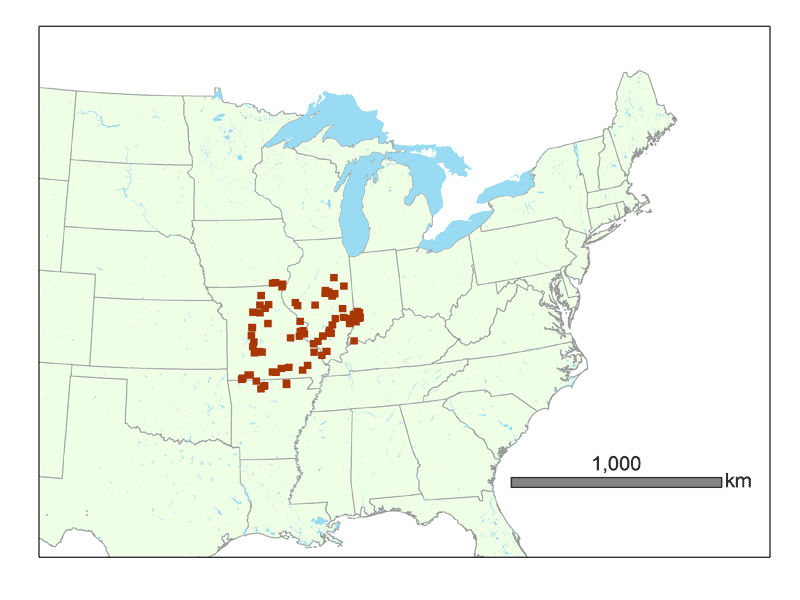
Magicicada neotredecim Marshall and Cooley 2000
M. neotredecim was described in 2000 (see Evolution Vol. 54, No.4, Pp. 1313-1325). M. neotredecim and its closest relative, M. septendecim, are consistently distinguishable only in life cycle length. The new species is similar to 13-year M. tredecim, but distinguishable in male song pitch, female song pitch preferences (Marshall and Cooley 2000), abdomen color, and mitochondrial DNA (mtDNA) lineage (Simon et al. 1998, Martin and Simon 1988, 1990). These findings are consistent with the theory that M. neotredecim evolved from populations of M. septendecim by a life cycle change (Martin and Simon 1988, 1990, Marshall and Cooley, 2000, Simon et al. 2000).
The two 13-year -decim species have a special geographic relationship -- they are not sympatric (living together) across the entire 13-year range. Where M. neotredecim and M. tredecim overlap, M. neotredecim songs are much higher-pitched, while M. tredecim songs are slightly lower-pitched. This pattern of reproductive character displacement suggests that the songs have evolved to reduce wasteful sexual interactions between the species.
The photos show that M. neotredecim is extremely similar to 17-year M. septendecim in appearance. The dark bands on the underside of the abdomen are similar to those of M. septendecim. Again, the calling song of M. neotredecim is very high-pitched only where it overlaps M. tredecim geographically; the sample below is taken from this overlap zone. Outside of that region, M. neotredecim songs sound like those of M. septendecim.
Magicicada neotredecim songs:
Calling song / Court I (complete phrases: high-pitch song from overlap zone)
Court II (fragment)
Court III (fragment)
Magicicada neotredecim approximate range:
